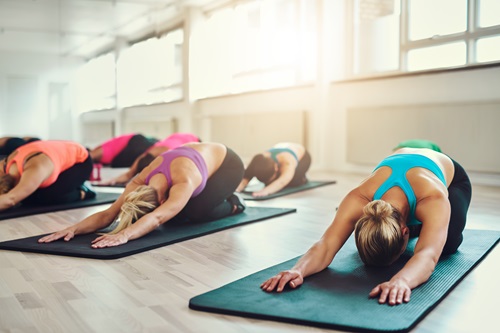
Photo © David Wood | Dreamstime.com
Is there such a thing as “wellbeing burnout”? According to lululemon’s fourth annual “2024 Global Wellbeing Report,” released in late September, yes.
While the focus on wellbeing is stronger than ever — 89% of people are taking more action than they were a year ago to improve their wellbeing — so is the pressure to keep up. Nearly two-thirds of respondents to the lululemon survey are struggling with the growing societal demand to support their wellbeing in specific ways. This pressure, the report states, is causing almost half of respondents to experience “wellbeing burnout.”
“People are talking about mental health more than ever before and it is critical for every part of our societies to come together to continue to raise awareness, reduce stigma and take action to increase support for mental health around the world,” Sarah Kline, CEO of United for Global Mental Health (UnitedGMH) and a member of lululemon’s Mental Wellbeing Global Advisory Board, said in a statement.
“By sharing these insights, we hope to stimulate conversations and encourage people to reflect on how to support their wellbeing,” added lululemon CEO Calvin McDonald. “The data shows us that moving with others and feeling a sense of community can positively impact how a person feels.”
How people feel these days can be a bit distressing, if you look at some of the 50-page report’s findings:
- 61% of those surveyed say they experience overwhelming societal expectations to appear well.
- 53% say there is a lot of conflicting information about the best ways to improve wellbeing.
- 76% of Gen Z-ers and 71% of Millennials feel pressure from others/society in the ways they are expected to support their wellbeing — compared to 60% of Gen X-ers and 41% of Boomers.
- 52% of all respondents wish it were more socially acceptable to express their full range of emotions.
- 45% feel pressure to pretend their happy even when they’re not.
- 63% of those experiencing wellbeing burnout feel powerless when it comes to improving their wellbeing.
- 89% of those experiencing “wellbeing burnout” say loneliness is a contributing factor.

“Often, the pressure to improve our wellbeing causes us to overthink and fixate on what’s lacking in our lives,” explained Dr. Murali Doraiswamy, a Duke University professor and another member of lululemon’s Mental Wellbeing Global Advisory Board. “I recommend setting gradual, achievable goals, turning the pursuit of wellbeing into a source of joy and anticipation rather than stress.”
The report outlines three strategies that are helping people worldwide get unstuck and move beyond “wellbeing burnout.” They are:
1. Quiet the noise: Focus on mindfulness, take social media breaks and set boundaries. For example, those who practice meditation report 12% higher wellbeing.
2. Do what feels good to you: Practice doing things at your own pace, move your body throughout the day, spend time in nature or use physical activity to socialize. Those who move their body a little throughout the day report 16% higher wellbeing.
3. Invite others on your journey: Connect with your community by working out with a friend, sign-up for a team sport or fitness class, or vocalize your needs with your family and friends. Those who use physical activity as an opportunity to socialize with others report 23% higher wellbeing.
The report is based on research conducted in April and May that included 16,000 adults in 15 countries (including the United States, Canada and the United Kingdom).
The subjective meaning of wellness — and individual interpretations of the term — also could be a contributing factor to “wellness burnout.”
According to the Global Wellness Institute, wellness is “the active pursuit of activities, choices and lifestyles that lead to a state of holistic health,” and it typically encompasses at least six dimensions: physical, mental, emotional, spiritual, social and environmental. The word “can be traced back to ancient civilizations from the East (India, China) to the West (Greece, Rome). In 19th-century Europe and the United States, a variety of intellectual, religious and medical movements developed in parallel with conventional medicine.”
The lululemon report defines wellbeing as consisting of three core elements: physical, mental and social. “The balance of these three elements,” it states, “makes up the core of being well and feeling your best.”
Despite the continued prioritization of wellbeing, Wellbeing Index Scores measured across physical, mental and social dimensions, have remained stagnant globally over the past four years, according to the report — underscoring the need for a change in the approach to improving wellbeing.
To that end, lululemon recently announced a $3.1 million commitment to United for Global Mental Health, The Global Coalition for Youth Mental Health led by UNICEF and UNICEF’s Global Mental Health Fund, and the National Alliance on Mental Illness (NAMI) to help continue their work in advancing mental health across the globe, with a sharpened focus on the intersection of movement and mental health.
And don’t forget: World Mental Health Day was Oct. 10. Here’s hoping you followed some of those steps.

